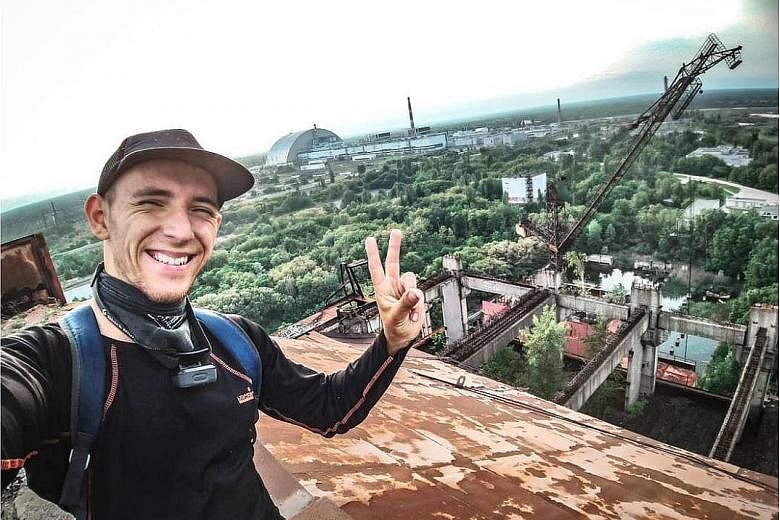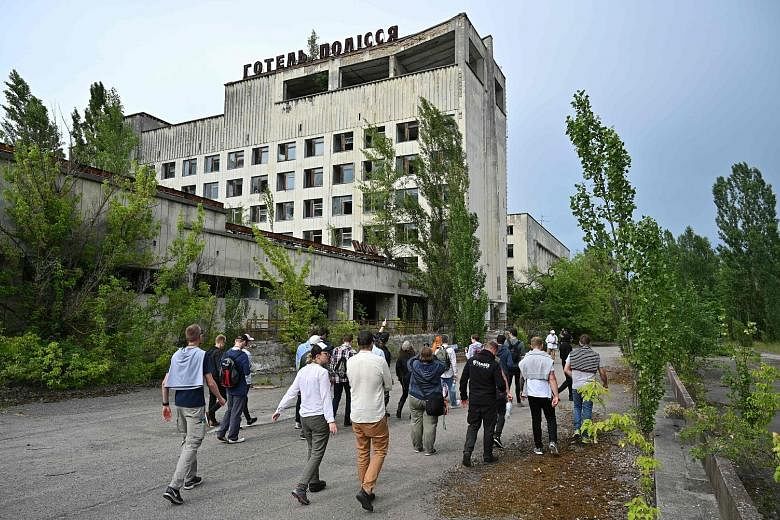TBILISI • A spate of selfie-taking tourists at Chernobyl in the wake of a hit TV series on the world's worst nuclear disaster has sparked anger, with the show's author urging more respect for the dead.
The nuclear plant and the abandoned town that neighbours it in Ukraine have witnessed a spike in visitors since the HBO drama aired last month to rave reviews.
But some have been criticised for disrespecting the site's tragic history with selfies - an increasingly common theme at disaster zones.
"It's wonderful that #ChernobylHBO has inspired a wave of tourism to the Zone of Exclusion. But yes, I've seen the photos going around," tweeted Mr Craig Mazin, the creator of the Chernobyl miniseries.
"If you visit, please remember that a terrible tragedy occurred there. Comport yourselves with respect for all who suffered and sacrificed," he added.
In one posting, an Instagram user posed in front of an abandoned building in Pripyat, the ghost town once home to 50,000 people who mainly worked at the plant, with her hazmat suit open to show off her G-string.
Another made a victory gesture while smiling at a viewpoint overlooking the nuclear facility, and others struck glamorous poses against a backdrop of a nuclear wasteland.
"No respect for those who died in this catastrophe," Instagram user nathhaa-commented on one post.
April marked the 33rd anniversary of the Chernobyl disaster in then-Soviet Ukraine, caused by a botched safety test that sent nuclear material across much of Europe. It killed 31 people instantly and forced tens of thousands to flee. Up to 115,000 people are thought to have died of radiation-related illnesses.
From the Auschwitz concentration camp to the Berlin Holocaust memorial, social media users chasing likes and followers have often been accused of being insensitive to their surroundings.
In March, the US city of Lake Elsinore declared a public safety crisis after a "superbloom" of poppies in a nearby canyon attracted tens of thousands of visitors.
SoloEast, a company offering Chernobyl tours that saw a 30 per cent rise in bookings in the wake of the HBO show, said it has asked visitors to respect the place. "We ask our clients not to take disrespectful pictures," SoloEast director Sergiy Ivanchuk told Reuters.
"Very rarely do people go to these sites because they enjoy, in some morbid way, the suffering of others. They go because these places are important and interesting."
The HBO miniseries depicts the explosion's aftermath, the clean-up and the subsequent inquiry.
The disaster and the government's handling of it highlighted the shortcomings of the Soviet system with its unaccountable bureaucrats and entrenched culture of secrecy.
REUTERS


